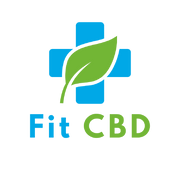Discover How Dermal Fillers Work at It’s Me and You Clinic
What is Redensity 1?

Redensity 1 is a premium injectable dermal filler specifically designed for skin rejuvenation and hydration.
Unlike traditional dermal fillers that primarily focus on adding volume, Redensity 1 utilizes a unique hyaluronic acid (HA) formula enriched with essential amino acids, antioxidants, and minerals. This special composition targets the deeper layers of the skin, working to revitalize and enhance its overall health and appearance.
Hyaluronic acid is naturally found in the body and plays a crucial role in maintaining skin elasticity, hydration, and plumpness. As we age, our natural HA production declines, leading to dryness, wrinkles, and a loss of firmness. Redensity 1 replenishes these depleted levels, effectively restoring the skin’s youthful radiance.
The added amino acids and antioxidants in Redensity 1 offer further benefits. Amino acids are the building blocks of collagen, a protein essential for maintaining skin structure and strength. Antioxidants combat free radical damage, which can contribute to premature aging and dullness. The minerals present in Redensity 1 help regulate cell function and promote overall skin health.
Redensity 1 is typically administered through a series of superficial injections into the face, neck, décolletage, or hands. It can be used to address a range of concerns, including fine lines, wrinkles, uneven skin tone, dryness, and loss of elasticity.
The treatment is relatively quick and comfortable, with minimal downtime. Results are gradual but long-lasting, with many patients experiencing noticeable improvements in their skin’s texture, hydration, and overall appearance for several months.
Redensity 1 is a next-generation hyaluronic acid (HA) skin booster developed by Teoxane Laboratories. It’s specifically designed to address various aesthetic concerns and rejuvenate the skin from within.
Unlike traditional fillers that primarily focus on adding volume, Redensity 1 works differently. Its unique formulation contains a blend of HA molecules of varying sizes, along with antioxidants and minerals. This combination allows it to deeply hydrate the skin, stimulate collagen production, and improve overall skin texture and tone.
Here’s how Redensity 1 can benefit various skin concerns:
- Hydration:**
- Fine Lines and Wrinkles:**
- Uneven Skin Tone:**
- Loss of Elasticity:**
- Skin Texture Improvement:**
- Online Search Engines: Start your search using keywords like “Redensity 1 Kenley,” “skin booster treatments Surrey” or “dermal fillers Kenley.” Look at clinics’ websites, read reviews from previous patients, and check their qualifications.
- Professional Directories: Utilize online directories specializing in aesthetic practitioners. These often have filters for location and specific treatments, making it easier to find Redensity 1 specialists in your area.
- Word of Mouth: Ask friends, family, or colleagues if they have any recommendations for reputable clinics in Kenley or nearby areas.
- Cost: The cost of Redensity 1 treatments can vary depending on factors such as the practitioner’s experience, the number of syringes used, and the area being treated.
- Consultation Fee: Some clinics may charge a consultation fee to cover the initial assessment.
- Number of Sessions: You might require multiple sessions spaced several weeks apart for optimal results.
- Aftercare Instructions:** The practitioner will provide detailed instructions on how to care for your skin after the treatment.
-
**Sun Exposure:** Protect your skin diligently from UV rays. Use a broad-spectrum sunscreen with an SPF of 30 or higher daily, even on cloudy days. UV exposure can degrade collagen and hyaluronic acid, diminishing the treatment’s effects.
-
Hydration: Maintain optimal hydration by drinking plenty of water throughout the day. Hydration helps plump the skin, enhancing the benefits of Redensity 1.
-
**Diet:** A balanced diet rich in fruits, vegetables, and antioxidants supports collagen production and overall skin health.
-
Sleep: Aim for 7-8 hours of quality sleep each night. During sleep, your body repairs and regenerates skin cells.
-
**Repeat Treatments:** To maintain the results and prolong their duration, consider repeat Redensity 1 treatments every 6-12 months, as recommended by your practitioner.
-
Topical Skincare: Use a high-quality moisturizer and incorporate products containing hyaluronic acid or other hydrating ingredients into your skincare routine.
-
**Professional Facials:** Consider incorporating regular facials into your regimen. Facial treatments can provide deep cleansing, exfoliation, and nourishment that complement the effects of Redensity 1.
- Hydration: Drink plenty of water throughout the day to keep your skin hydrated from within. Aim for at least 8 glasses daily.
- Sun Protection: Always wear broad-spectrum sunscreen with an SPF of 30 or higher, even on cloudy days. UV radiation can break down collagen and elastin, diminishing your results.
- Diet: Consume a balanced diet rich in antioxidants, vitamins, and minerals to support skin health. Focus on fruits, vegetables, lean proteins, and healthy fats.
- Sleep: Get adequate sleep (7-9 hours per night) as your skin repairs and regenerates during this time.
- Stress Management: Chronic stress can negatively impact skin health. Practice stress-reducing techniques such as yoga, meditation, or deep breathing exercises.
- Follow Your Practitioner’s Instructions: Adhere to your practitioner’s specific aftercare advice regarding skincare products, activities to avoid, and follow-up appointments.
- Hydrating Skincare: Use a gentle, hydrating cleanser and moisturizer formulated for your skin type. Look for ingredients like hyaluronic acid and ceramides that enhance hydration.
- Gentle Exfoliation: Incorporate gentle exfoliation 1-2 times per week to remove dead skin cells and promote cell turnover, enhancing product absorption.
- Professional Treatments:**
- Repeat Treatments: Redensity 1 injections typically require repeat sessions every 6-12 months to sustain the desired effects.
Redensity 1 is highly effective in replenishing moisture levels in the skin. Its HA molecules attract and retain water, leaving the skin plump, supple, and dewy.
Redensity 1 helps to smooth out fine lines and wrinkles by plumping up the skin and stimulating collagen production. The added antioxidants help protect the skin from further damage caused by free radicals.
Redensity 1 can even out skin tone by improving circulation and reducing pigmentation irregularities. It brightens the complexion and gives a more radiant appearance.
Redensity 1’s collagen-boosting properties help restore firmness and elasticity to the skin, making it appear more youthful and toned.
Redensity 1 can refine skin texture by reducing the appearance of pores, smoothing rough patches, and promoting a more even surface.
Contact Dr. Laura Geige for Advanced Anti-Wrinkle Injectables
Redensity 1 Treatments near Kenley, Surrey
Finding a qualified practitioner for **Redensity 1** skin booster treatments near Kenley, Surrey, ensures you receive safe and effective results.
Start your search by exploring reputable aesthetic clinics in the area. Look for clinics with experienced practitioners who are certified or registered with relevant professional bodies like the General Medical Council (GMC) or the British Association of Cosmetic Nurses (BACN).
Online reviews and testimonials from previous patients can offer valuable insights into the expertise and professionalism of different practitioners.
Consultations are crucial before undergoing any treatment. During your consultation, discuss your skincare concerns, expectations, and medical history with the practitioner. Ask about their experience with Redensity 1 specifically and inquire about the treatment process, potential side effects, and aftercare instructions.
Don’t hesitate to ask for before-and-after photos of previous patients who have received similar treatments to get a better understanding of the possible outcomes.
Choosing a qualified practitioner with a proven track record, coupled with thorough research and open communication, will enhance your chances of achieving desired results and ensuring your safety throughout the **Redensity 1** skin booster treatment journey near Kenley.
Redensity 1 skin boosters are a popular non-surgical cosmetic treatment designed to rejuvenate and improve the appearance of skin. They work by injecting hyaluronic acid (HA) into the deeper layers of the skin.
This HA attracts and retains moisture, plumping up the skin from within and reducing the appearance of fine lines, wrinkles, and dehydration. Redensity 1 is particularly formulated to address concerns such as skin tone, texture, and radiance.
Finding a qualified practitioner in Kenley, Surrey, who specializes in Redensity 1 treatments is essential for achieving safe and effective results. Here’s how to find the right clinic:
During a consultation, a qualified practitioner will assess your individual skin concerns and goals. They’ll discuss your medical history, potential risks and benefits, and answer any questions you may have about the treatment process, including:
It’s important to choose a clinic with experienced practitioners, a clean and sterile environment, and transparent pricing.
Maintaining Your Results
Maintaining your results from a Redensity 1 Skin Booster treatment involves adopting a holistic approach that focuses on both internal and external care.
Here’s a breakdown of key factors influencing the longevity of effects and tips for maximizing their duration:
Expected Duration of Effects
The noticeable improvements from Redensity 1 typically last between 6 to 12 months.
Individual results can vary based on factors like skin type, lifestyle, and the extent of the initial treatment.
Lifestyle Factors Influencing Results
Maintenance Strategies
Get in Contact with Dr. Laura Geige at It’s Me and You Clinic Instantly
Maintaining your results from Redensity 1 skin booster treatments in Kenley, Surrey involves a holistic approach that combines lifestyle factors and dedicated aftercare.
Lifestyle Factors:
Maintenance Tips:
Consider additional professional treatments like facials or microneedling as recommended by your practitioner to maintain optimal results.













